Breaking News


Popular News


Discover the potential of augmented reality in healthcare, including benefits, medical training, surgical procedures, patient education, and overcoming integration challenges.Augmented Reality (AR) has been making waves in the healthcare industry, revolutionizing the way medical professionals are trained, surgeries are conducted, and patients are educated about their conditions. In this blog post, we will explore the exciting advancements and potential of AR technology in the field of healthcare. From enhancing medical training to improving surgical procedures and providing innovative patient education tools, AR is offering a wide array of benefits that are reshaping the future of healthcare.
The first section will delve into the various benefits of AR in healthcare, highlighting how this technology is improving patient outcomes and streamlining medical processes. We will then explore the application of AR in medical training, discussing how it is transforming the way future healthcare professionals are learning and honing their skills. Additionally, we will discuss how AR is being used to enhance surgical procedures, providing surgeons with real-time, interactive guidance during complex operations. Furthermore, we will examine the development and implementation of AR-based patient education tools and the challenges and opportunities in integrating AR into the healthcare system. Join us as we embark on a journey into the future of augmented reality in healthcare.
Contents
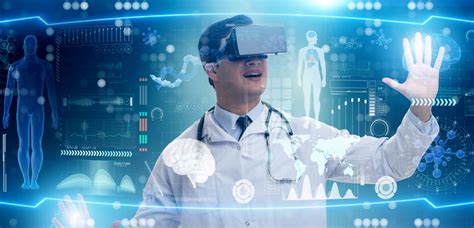
In recent years, Augmented Reality (AR) has been increasingly utilized in the field of healthcare, offering numerous benefits to patients, medical professionals, and the healthcare system as a whole. One of the key advantages of AR in healthcare is its ability to enhance the accuracy and efficiency of medical procedures. By overlaying digital information onto the real-world environment, AR technology allows surgeons to visualize internal structures and organs in 3D, providing valuable guidance during complex surgical procedures. This not only improves surgical precision, but also reduces the risk of complications, ultimately leading to better patient outcomes.
Furthermore, AR has the potential to revolutionize medical education and training. Through the use of AR-based simulations and interactive learning experiences, medical students and professionals can gain practical, hands-on experience in a virtual environment. This not only enhances their understanding of complex medical concepts, but also allows them to practice and refine their skills in a realistic yet risk-free setting. As a result, AR is paving the way for more competent and confident healthcare professionals, ultimately contributing to higher standards of patient care.
Another significant benefit of AR in healthcare is its capacity to improve patient education and engagement. By using AR technologies, healthcare providers can create immersive, interactive educational materials that allow patients to visualize and comprehend their medical conditions and treatment options more effectively. This not only leads to greater patient satisfaction and compliance, but also empowers individuals to take a more active role in managing their health.
In summary, the integration of AR in healthcare holds great promise for advancing medical practice, education, and patient care. By harnessing the power of AR technology, healthcare stakeholders can expect to see improved surgical outcomes, enhanced medical training, and better-informed patients, ultimately leading to a more efficient, effective, and patient-centered healthcare system.
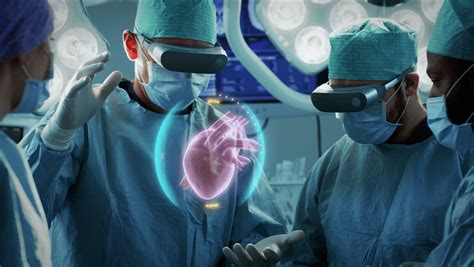
Augmented Reality (AR) has been increasingly applied in the field of medical training, revolutionizing the way future medical professionals learn and practice their skills. One of the most significant benefits of using AR in medical training is the ability to provide hands-on experience in a simulated environment, thus enhancing the learning experience for trainees. This technology allows trainees to interact with virtual patients and perform procedures in a controlled setting, which can significantly improve their confidence and competence before entering the real-world clinical practice.
Moreover, AR can be used to create personalized training programs for medical students, catering to their individual learning needs and preferences. By utilizing AR-based medical training modules, educators can offer a more engaging and interactive learning experience, leading to better retention of knowledge and skills. This personalized approach can help address the diverse learning styles and abilities of medical trainees, ultimately enhancing the overall quality of medical education.
Furthermore, AR in medical training can also facilitate remote learning and collaboration, allowing trainees to access training materials and participate in virtual simulations from any location. This can be particularly beneficial for medical students and professionals in remote or underserved areas, as they can access high-quality training resources without the need to travel to specialized training centers.
In conclusion, the application of AR in medical training holds great potential in transforming the way medical professionals are educated and trained. By providing immersive, interactive, and personalized learning experiences, AR technology can help prepare future healthcare professionals more effectively, ultimately leading to improved patient care and outcomes.
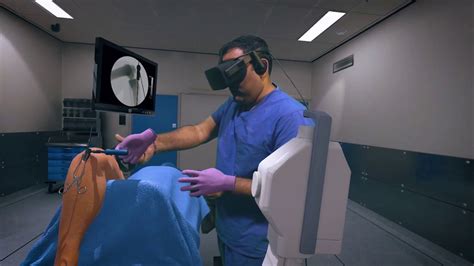
Augmented Reality (AR) has transformed the way surgical procedures are performed in the healthcare industry. With the introduction of AR technology, surgeons are now able to visualize and access crucial information during operations without taking their eyes off the patient. This has significantly enhanced the accuracy and precision of surgical procedures, leading to better patient outcomes.
One of the key benefits of using AR in surgical procedures is the ability to overlay digital images onto the patient’s body, providing real-time guidance and assistance to the surgeon. This enables them to navigate through complex structures with ease, reducing the risk of errors and complications. Additionally, AR can also provide vital information such as patient vitals, medical history, and relevant imaging studies, allowing surgeons to make informed decisions in the operating room.
Furthermore, the application of AR in surgical training has revolutionized the way future surgeons are being prepared for complex procedures. Trainees can now practice surgical techniques in a simulated AR environment, gaining hands-on experience without putting real patients at risk. This not only improves their skills and confidence but also reduces the learning curve, ultimately leading to better patient care.
| Challenges | Opportunities |
|---|---|
| Despite the numerous advantages of AR in surgical procedures, there are still challenges that need to be addressed. One of the main concerns is the cost of implementing AR technology in operating rooms, which can be a barrier for many healthcare facilities. | However, as AR technology continues to advance, the costs are expected to decrease, making it more accessible to a wider range of healthcare providers. In addition, the opportunities for further advancements and innovations in AR integration within surgical procedures are vast, with the potential to significantly improve patient outcomes and overall healthcare delivery. |
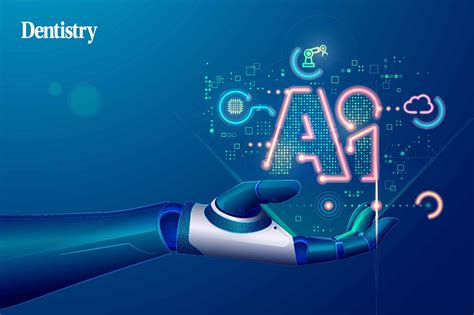
Augmented Reality (AR) has been making significant advancements in the healthcare industry, with one area of application being patient education. AR-based patient education tools have the potential to revolutionize the way patients understand their medical conditions and treatment options.
Using AR technology, healthcare professionals can create interactive simulations and visualizations that allow patients to virtually experience their condition and the effects of different treatments. This hands-on approach to learning can help patients gain a better understanding of complex medical concepts and make more informed decisions about their healthcare.
Furthermore, AR-based patient education tools can also be used to train caregivers and family members on how to provide proper care for the patient. By using AR simulations, caregivers can learn how to administer medication, perform medical procedures, and provide essential support in a realistic and immersive environment.
In addition, incorporating AR into patient education can help improve health literacy, reduce anxiety, and enhance overall patient satisfaction. As the technology continues to evolve, we can expect to see more innovative and personalized AR-based patient education tools being developed to meet the specific needs of individual patients and improve health outcomes.
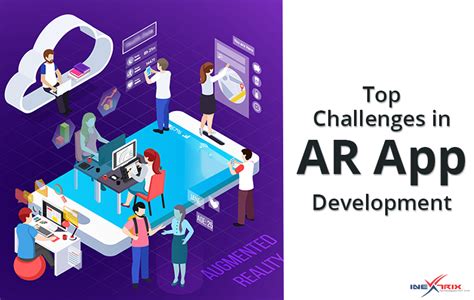
Augmented Reality (AR) has been making strides in the healthcare industry, presenting both challenges and opportunities for integration. One of the main challenges in AR integration is the high cost of the technology. Implementing AR tools in healthcare facilities requires significant investment in hardware, software, and staff training. This cost can be a barrier for many organizations, especially smaller ones with limited resources. Additionally, there is a lack of standardized regulations and guidelines for AR usage in healthcare. This creates uncertainty and potential risks for patient safety and data security.
On the other hand, the opportunities for AR integration in healthcare are abundant. AR technology has the potential to revolutionize medical education and training. By using AR applications, medical students and professionals can gain hands-on experience in a simulated environment, improving their skills and knowledge without putting real patients at risk. AR also offers the opportunity to enhance patient care through improved visualization during surgical procedures. With AR, surgeons can overlay real-time data onto a patient’s anatomy, providing valuable insights and improving precision.
Furthermore, AR-based patient education tools have the potential to improve patient outcomes and compliance. By visualizing complex medical concepts and treatment plans in a more interactive and engaging manner, AR can help patients better understand their conditions and make informed decisions about their care. This has the potential to lead to better treatment adherence and overall health outcomes.
In conclusion, while there are challenges in integrating AR technology into the healthcare industry, the opportunities for improvement and innovation are significant. Overcoming the hurdles of cost and regulation will be crucial in realizing the full potential of AR in healthcare. However, the potential benefits of AR integration, such as enhanced medical training, improved surgical procedures, and better patient education, make it a worthwhile endeavor for the future of healthcare.

What is augmented reality (AR)?
Augmented reality is a technology that overlays digital information such as images, videos, or 3D models onto the real world using devices like smartphones, tablets, or AR glasses.
How is augmented reality currently being used in healthcare?
AR is currently being used in healthcare for medical training, patient education, surgical navigation, and rehabilitation therapy. It allows medical professionals to visualize complex medical data and provide more personalized care to patients.
What are some potential future applications of AR in healthcare?
In the future, AR could be used for remote consultations, assisting in medical procedures, improving patient outcomes, and enhancing the overall healthcare experience for both patients and providers.
What are the benefits of using augmented reality in healthcare?
Some of the benefits of using AR in healthcare include improved accuracy and precision during medical procedures, enhanced medical education and training, better patient engagement, and reduced healthcare costs.
What are the challenges of implementing augmented reality in healthcare?
Challenges of implementing AR in healthcare include concerns about data privacy and security, regulatory hurdles, integration with existing healthcare systems, and the need for specialized training for healthcare professionals.
How can augmented reality improve medical education?
AR can improve medical education by providing students with interactive and immersive learning experiences, allowing them to visualize and interact with complex anatomical structures and medical concepts in a more engaging and effective way.
What does the future hold for augmented reality in healthcare?
The future of AR in healthcare looks promising, with the potential for significant advancements in patient care, medical education, and the overall delivery of healthcare services as the technology continues to evolve and mature.